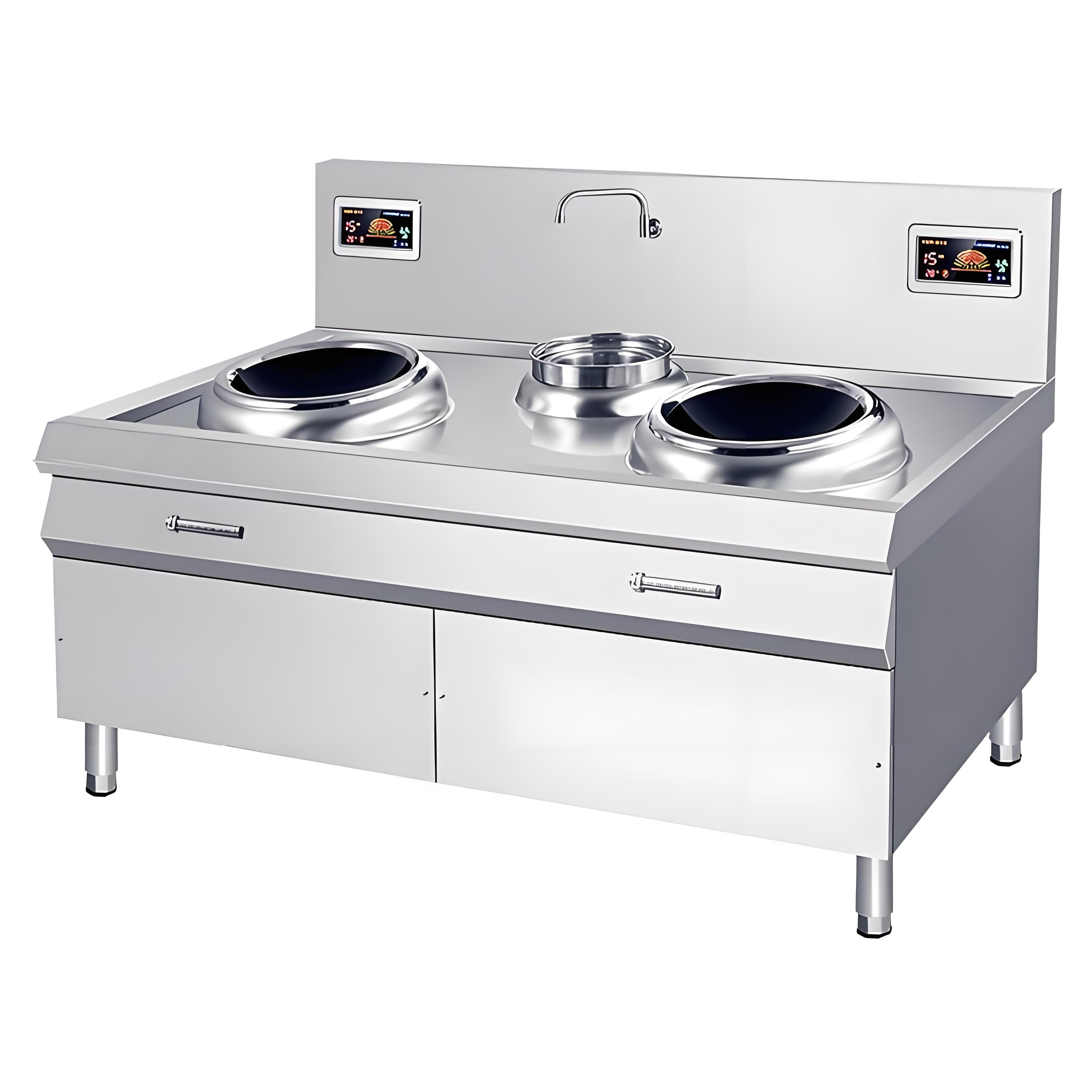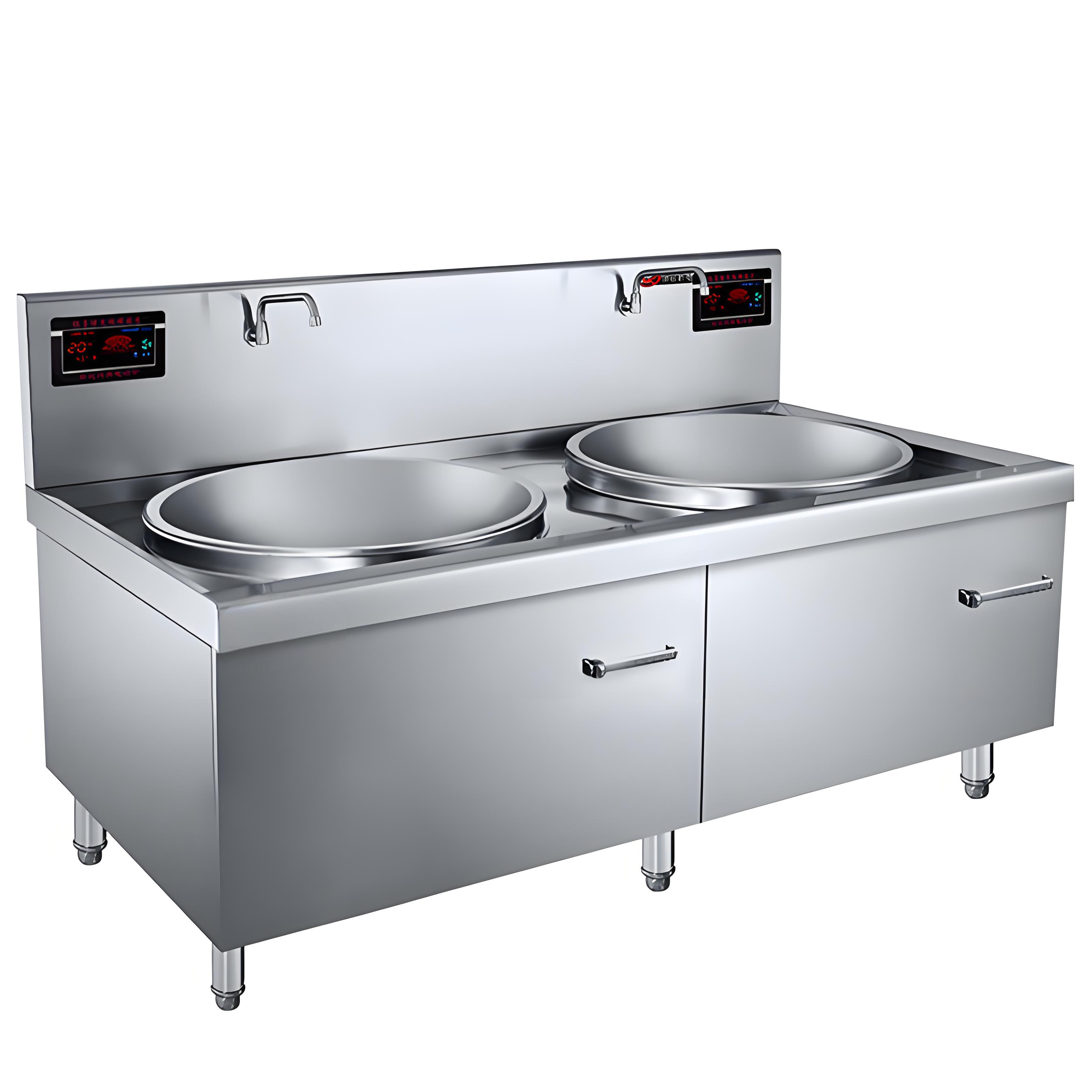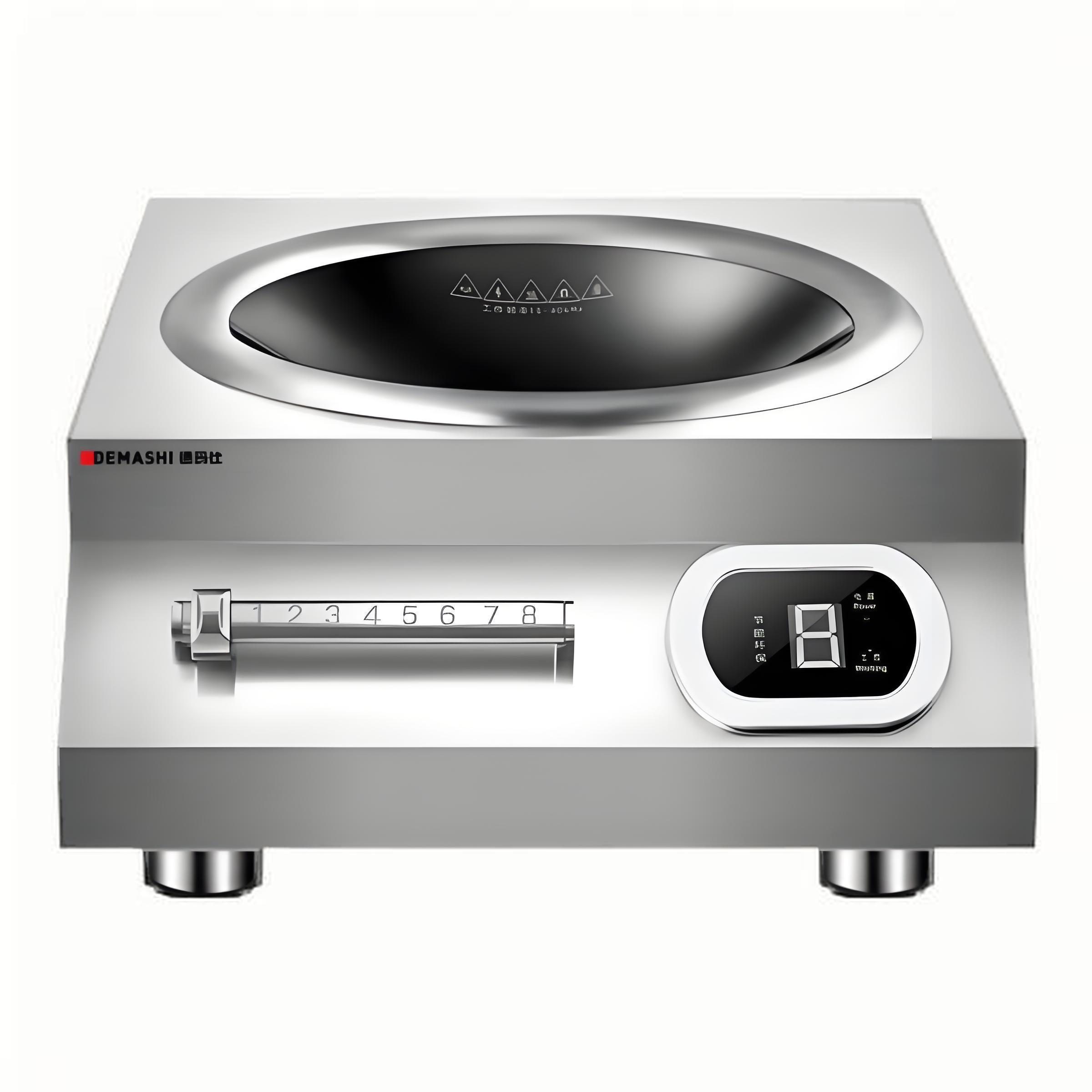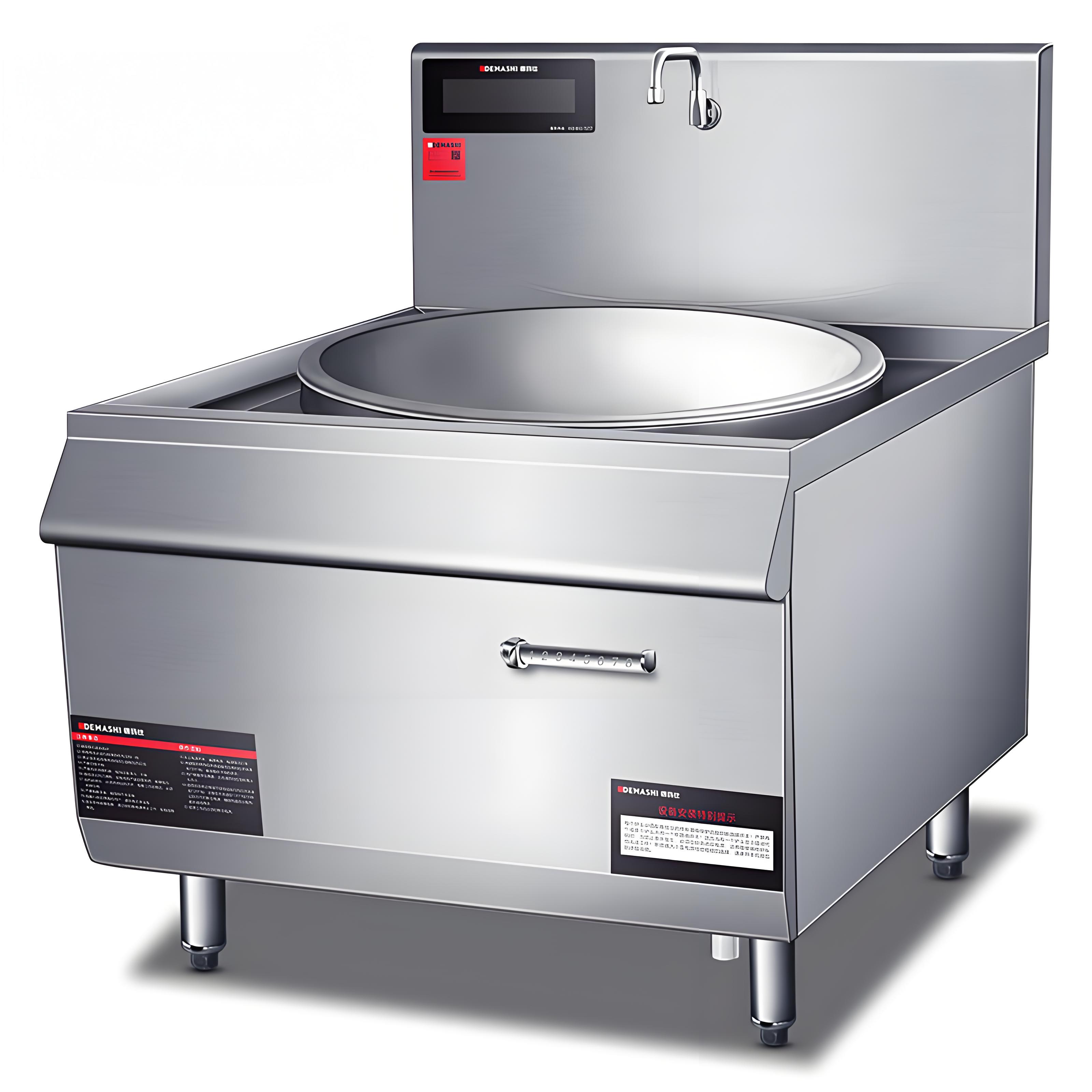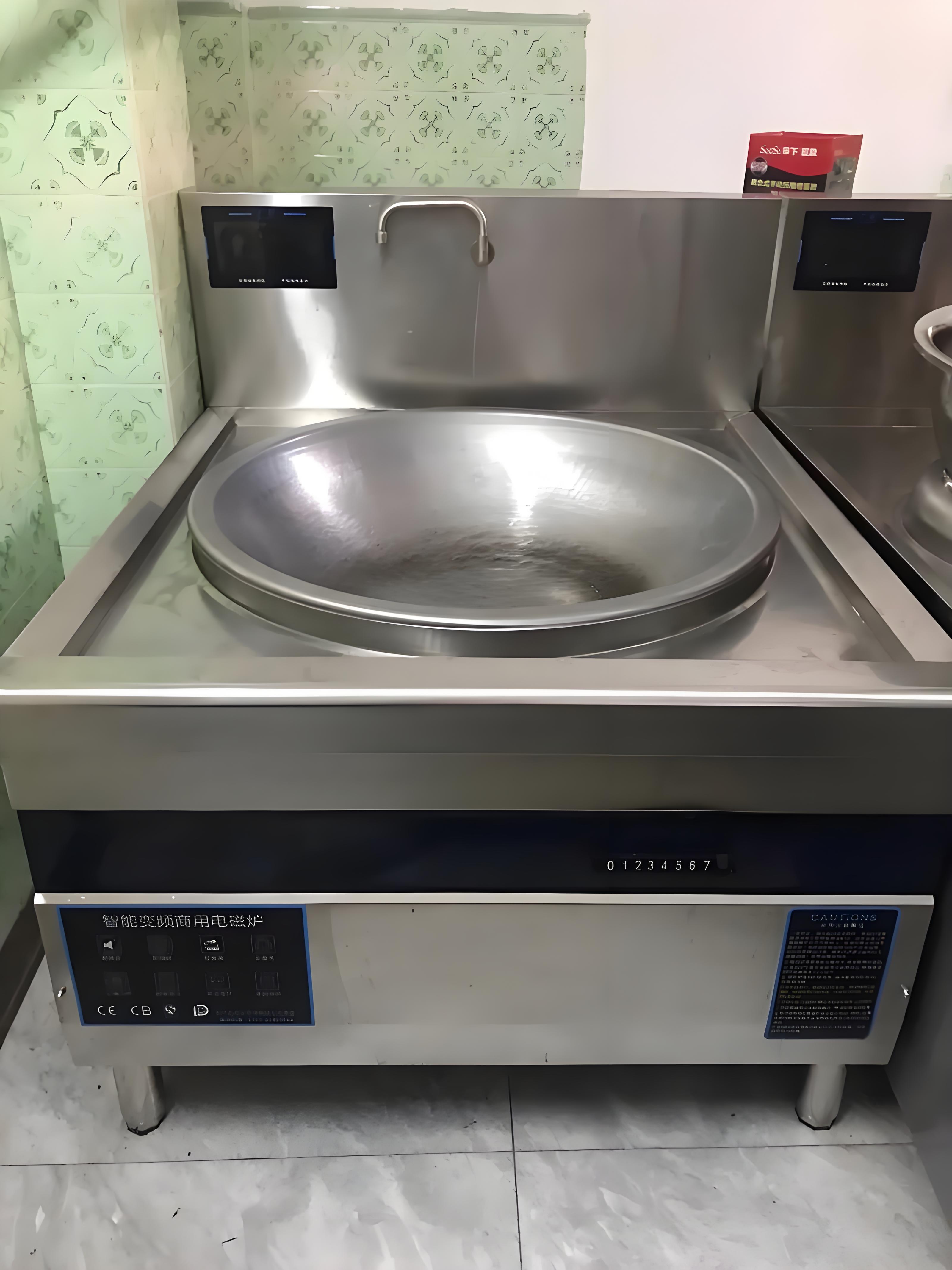Having spent over a decade in the commercial kitchen equipment industry, I’ve seen technology transform the way kitchens operate. When I first started, induction cookers were a novelty—prized for their efficiency but basic in functionality. Today, they come loaded with smart features like touch controls, pan detection, and Wi-Fi connectivity. But as someone who’s helped dozens of restaurants integrate these machines, I often get asked: Are these smart features actually practical in a busy kitchen? Let’s unpack this question with a mix of real-world insights and technical know-how, drawing from my experience working with chefs and kitchen managers.
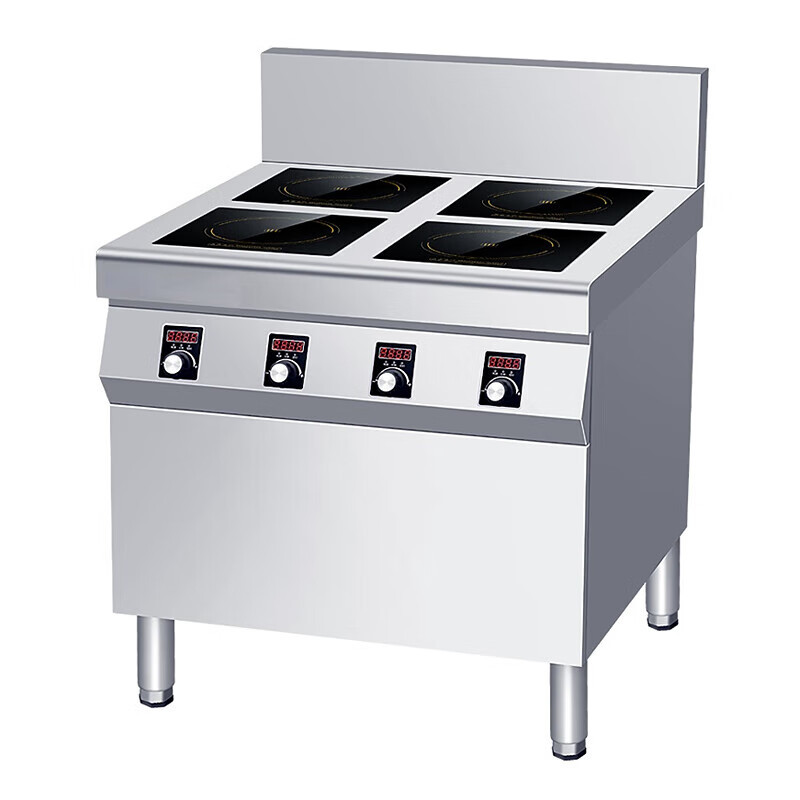
What Are Smart Features in Commercial Induction Cookers?
Before diving into their practicality, let’s clarify what “smart features” mean in this context. These are advanced functionalities designed to enhance performance, safety, and ease of use. Based on my time evaluating models from brands like Vollrath, Atosa, and Turbo Air, here are the most common smart features you’ll find:
Pan Detection: The cooker activates only when a compatible pan is placed on the surface.
Automatic Shut-Off: The unit turns off after a set period of inactivity or if overheating is detected.
Precise Temperature Control: Digital interfaces allow setting exact temperatures (e.g., 65°C for simmering).
Touchscreen or Smart Controls: Intuitive touch panels or even app-based controls for programming.
Wi-Fi/Bluetooth Connectivity: Remote monitoring or recipe programming via a smartphone or tablet.
Energy Monitoring: Tracks power usage in real time, often with data logging.
Diagnostic Alerts: Notifications for maintenance needs or malfunctions.
Programmable Presets: Pre-saved settings for specific dishes or cooking techniques.
These features sound impressive on a spec sheet, but do they hold up in the chaos of a commercial kitchen? Let’s break it down by evaluating their real-world utility, cost-effectiveness, and limitations.
The Practicality of Smart Features: A Closer Look
1. Pan Detection
In my experience, pan detection is one of the most practical smart features. It ensures the cooker only generates heat when a ferromagnetic pan is present, which saves energy and reduces the risk of burns. I’ve seen this feature shine in high-pressure environments like food trucks or catering setups, where staff might get distracted and leave the burner unattended.
Pros: Saves electricity (crucial for high-wattage units like 5 kW models) and enhances safety by preventing accidental activation. For example, in a busy diner I worked with, pan detection prevented a costly mishap when a chef left a burner on during cleanup.
Cons: It’s not foolproof. If a pan isn’t perfectly compatible (e.g., slightly warped or non-ferromagnetic), the cooker might not activate, frustrating staff. I’ve seen chefs revert to gas ranges in a pinch because of this.
Verdict: Highly practical, especially for safety-conscious kitchens. Just ensure your cookware is induction-compatible (test with a magnet).
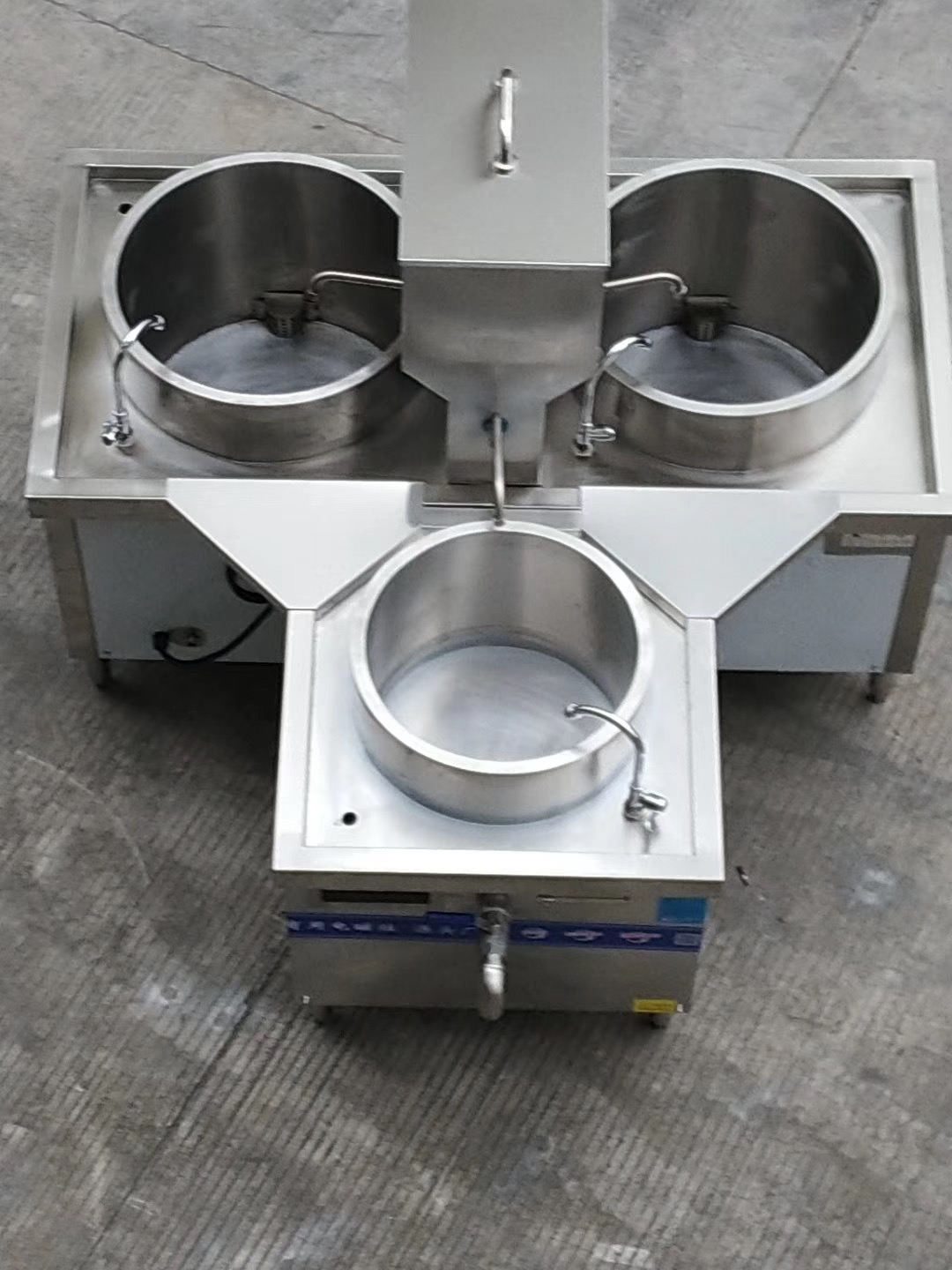
2. Automatic Shut-Off
Automatic shut-off is another feature I consider a must-have. It kicks in if the cooker detects overheating or prolonged inactivity (e.g., 2-4 hours without use). In one restaurant I consulted for, this feature saved a 3.5 kW countertop unit from damage when a pot boiled dry during a hectic lunch rush.
Pros: Reduces fire hazards and protects the cooker’s internal components, extending its lifespan. It’s especially useful in kitchens with long operating hours.
Cons: The shut-off timer might be too short for slow-cooking tasks like braising, requiring manual overrides that can annoy chefs. Some models don’t let you adjust the timer, which is a design flaw.
Verdict: Very practical for safety and durability, but check if the timer settings are adjustable to suit your menu.
3. Precise Temperature Control
Unlike gas stoves, where flame adjustments are more art than science, induction cookers with precise temperature control let you dial in exact temperatures (e.g., 80°C for poaching). This is a game-changer for tasks requiring consistency, like sous-vide prep or delicate sauce work.
Pros: Boosts efficiency and consistency. I worked with a pastry chef who swore by a 7 kW induction range for tempering chocolate at 45°C, something gas burners struggled with. It also reduces training time for new staff, as settings are repeatable.
Cons: Touch controls can be finicky in wet or greasy conditions, common in commercial kitchens. I’ve seen cheaper models with unresponsive panels that frustrated chefs during peak hours.
Verdict: Extremely practical for precision-driven kitchens, but invest in models with durable, responsive controls.
4. Touchscreen or Smart Controls
Touchscreen controls are increasingly common, replacing traditional knobs with sleek digital interfaces. Some high-end models even offer app-based controls for programming cooking cycles.
Pros: Intuitive for tech-savvy staff and allows quick adjustments. In a fine-dining restaurant I advised, the chef loved programming multi-step cooking sequences for complex dishes, saving time during service.
Cons: Touchscreens can be a liability in messy kitchens. Grease or water on the panel can cause glitches, and I’ve seen staff struggle with overly complex interfaces. App-based controls often feel gimmicky, as most chefs don’t have time to fiddle with a phone mid-service.
Verdict: Moderately practical if the interface is user-friendly and durable. Skip app-based controls unless you’re running a highly controlled, low-volume kitchen.
5. Wi-Fi/Bluetooth Connectivity
Some induction cookers offer Wi-Fi or Bluetooth connectivity for remote monitoring, recipe programming, or integration with kitchen management systems. This sounds futuristic, but in practice, it’s rarely used.
Pros: Useful for chain restaurants with standardized recipes. I saw a franchise benefit from syncing cookers across locations to ensure identical cooking parameters. It can also log usage data for maintenance planning.
Cons: Setup is often clunky, requiring stable Wi-Fi (rare in busy kitchens) and staff training. Most chefs I’ve worked with prefer hands-on control over remote apps, especially during peak hours.
Verdict: Low practicality for most kitchens due to complexity and limited real-world use. Consider it only if you need centralized control across multiple locations.

6. Energy Monitoring
Energy monitoring tracks power consumption, often displaying real-time or historical data. This feature is a favorite among cost-conscious restaurant owners.
Pros: Helps optimize energy costs. For example, a client running a 10 kW induction range used energy data to adjust cooking schedules, cutting their monthly bill by 15%. It’s also great for sustainability-focused businesses.
Cons: Not all models display data in an actionable way, and interpreting it requires some expertise. Smaller kitchens might not see enough savings to justify the feature.
Verdict: Practical for high-volume operations or eco-conscious businesses, but less critical for small setups.
7. Diagnostic Alerts
Diagnostic alerts notify you of issues like overheating, voltage fluctuations, or component wear. This is a feature I’ve come to appreciate after seeing how quickly minor issues can escalate.
Pros: Prevents costly repairs by catching problems early. A catering company I worked with avoided a $1,500 repair bill because their cooker’s alert prompted a quick fix for a faulty sensor.
Cons: Some alerts are vague, requiring technician input to decode. Cheaper models might lack this feature or provide unreliable diagnostics.
Verdict: Highly practical for minimizing downtime, especially in kitchens that rely heavily on their cookers.
8. Programmable Presets
Programmable presets let you save settings for specific dishes, like 180°C for searing or 90°C for simmering. This is a newer feature, often tied to digital controls.
Pros: Saves time and ensures consistency, especially for repetitive tasks. A fast-casual chain I consulted used presets to standardize burger cooking across their staff, improving quality control.
Cons: Programming can be time-consuming upfront, and not all staff use presets consistently. Some models limit the number of savable settings.
Verdict: Practical for standardized menus or high-turnover staff, but less useful in creative, chef-driven kitchens.
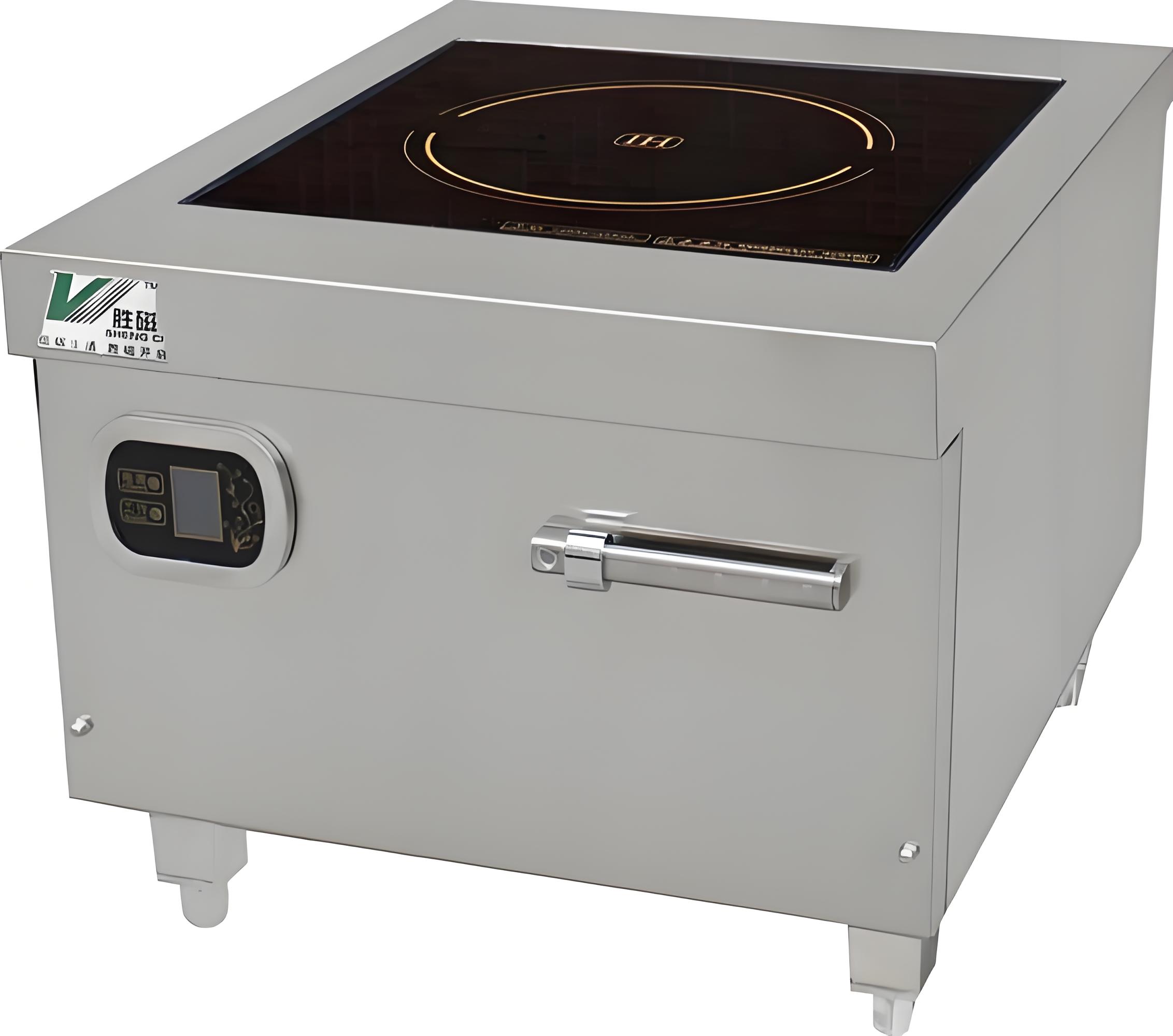
Summary Table of Smart Features
Here’s a table summarizing the practicality of these smart features based on my observations:
| Feature | Key Benefit | Practicality | Best For |
|---|---|---|---|
| Pan Detection | Saves energy, enhances safety | High | All kitchens, especially high-volume |
| Automatic Shut-Off | Prevents overheating, saves equipment | High | Long-hour operations |
| Precise Temperature | Consistent, repeatable cooking | High | Precision-driven menus |
| Touchscreen Controls | Intuitive, quick adjustments | Moderate | Tech-savvy, controlled environments |
| Wi-Fi/Bluetooth | Remote monitoring, recipe syncing | Low | Chain restaurants |
| Energy Monitoring | Optimizes energy costs | Moderate | Cost-conscious or eco-focused kitchens |
| Diagnostic Alerts | Prevents costly repairs | High | Heavy-use kitchens |
| Programmable Presets | Standardizes repetitive tasks | Moderate | Fast-casual or high-turnover staff |
Real-World Considerations
While these features sound great on paper, their practicality depends on your kitchen’s specific needs. Here are some factors I’ve learned to consider:
Kitchen Volume: In a high-volume kitchen (e.g., 200+ covers daily), features like pan detection and diagnostic alerts are critical to keep operations smooth. Smaller kitchens might find simpler models sufficient.
Staff Skill Level: Smart controls and presets shine with less experienced staff, as they reduce the learning curve. But veteran chefs often prefer manual control for flexibility.
Budget: Smart features often come with a premium price tag. A 5 kW induction cooker with basic controls might cost $1,200, while a smart model with Wi-Fi and presets could run $2,000. Weigh the benefits against your budget.
Maintenance: Features like diagnostics and energy monitoring require occasional software updates or technician support, which can add to long-term costs.
My Personal Take: A Tale of Two Kitchens
A few years ago, I helped two clients—a small bistro and a large catering company—choose induction cookers. The bistro opted for a basic 3.5 kW model with pan detection and auto shut-off. The owner loved the safety and simplicity, and the features saved energy during quiet shifts. The catering company, however, went all-in on a 12 kW range with touchscreen controls, presets, and diagnostics. While the presets streamlined their high-volume banquet prep, the touchscreen often glitched under heavy use, and the Wi-Fi feature was rarely used due to spotty kitchen connectivity.
The lesson? Match the features to your operation. The bistro didn’t need bells and whistles, while the caterer benefited from some (but not all) advanced functions. This experience reinforced my belief that practicality hinges on context.
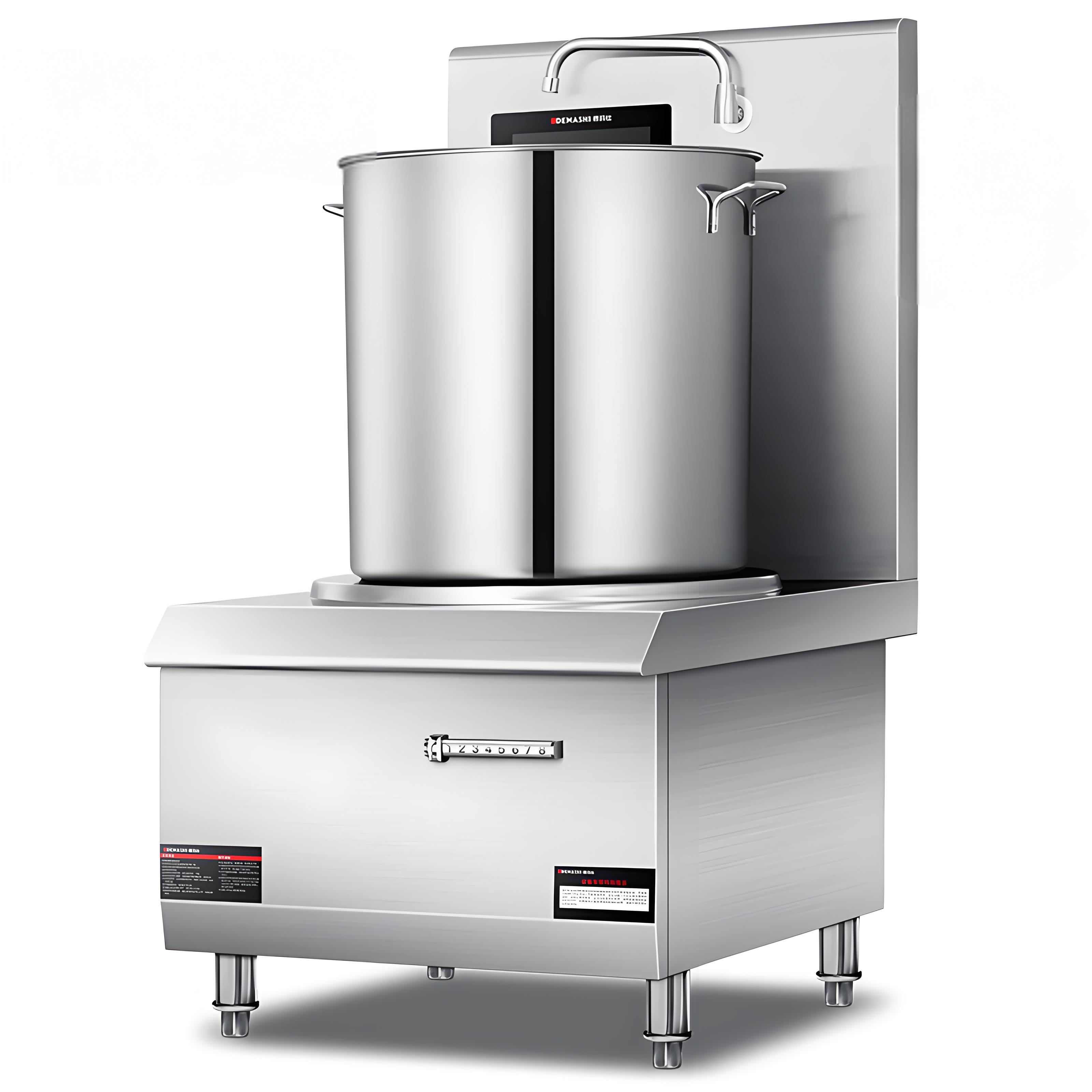
How to Evaluate Smart Features Before Buying
Here’s my step-by-step approach to deciding if a cooker’s smart features are worth it:
Assess Your Needs: Consider your menu, staff, and kitchen pace. Do you need precision for delicate dishes, or are you focused on speed and safety?
Test in Action: Request a demo to see how features perform under real conditions. Touchscreens, for example, should respond well even with greasy fingers.
Check Compatibility: Ensure features like Wi-Fi or presets integrate with your workflow. For instance, do you have reliable internet for connectivity?
Calculate ROI: Compare the cost of smart features to potential savings (e.g., energy efficiency or reduced repairs). A $500 feature that saves $50 a year isn’t worth it unless you’re planning for the long haul.
Read Reviews: Look for feedback from other kitchens similar to yours. I’ve found chef forums and industry trade shows invaluable for real-world insights.
Are Smart Features Worth It?
After years of working with commercial induction cookers, my take is that pan detection, automatic shut-off, precise temperature control, and diagnostic alerts are almost always worth having. They save time, money, and headaches while improving safety and consistency. Features like touchscreen controls and programmable presets can be useful in specific scenarios, like standardized menus or tech-forward kitchens, but they’re not universal must-haves. Wi-Fi/Bluetooth connectivity and energy monitoring are often overkill unless you’re running a large, data-driven operation.
Ultimately, the practicality of smart features depends on your kitchen’s unique demands. By focusing on features that align with your workflow and budget, you can harness the power of induction technology without paying for gimmicks you’ll never use.
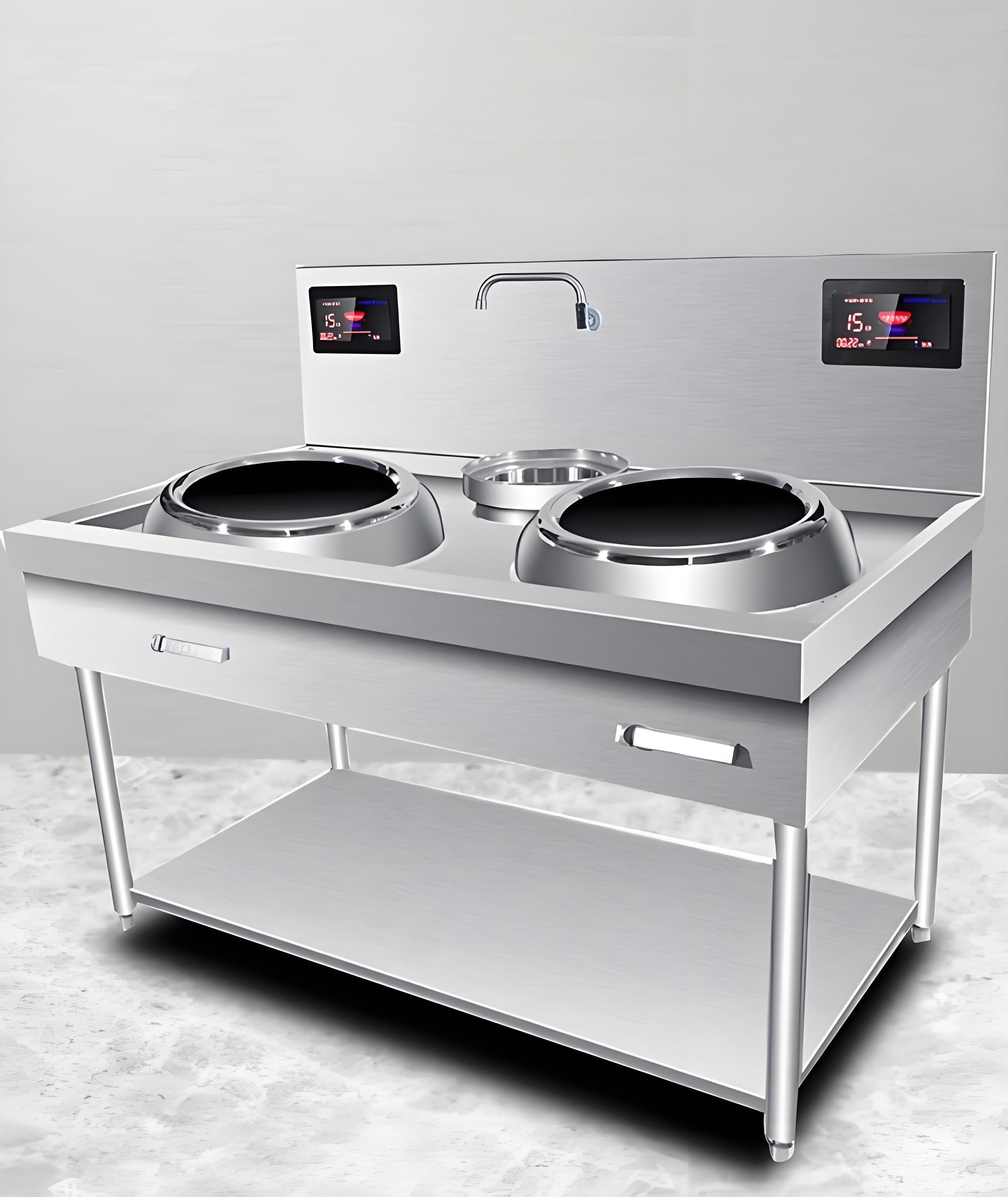
Related Questions and Answers
Q: Do smart features make induction cookers more expensive to maintain?
A: Some features, like diagnostics or Wi-Fi, may require occasional software updates or technician visits, adding to costs. Basic features like pan detection and auto shut-off typically don’t increase maintenance needs. Always check the warranty and service terms.
Q: Can smart features help with staff training?
A: Yes, features like precise temperature control and programmable presets simplify training by standardizing settings. I’ve seen new hires in fast-casual kitchens pick up induction cooking faster thanks to presets.
Q: Are smart features reliable in busy kitchens?
A: Most are reliable, but touchscreens can glitch in wet or greasy conditions, and Wi-Fi features depend on stable connectivity. Stick to reputable brands with durable designs for best results.
Q: Do smart features save significant energy?
A: Pan detection and energy monitoring can reduce energy waste, potentially saving 10-20% on bills in high-use kitchens. However, savings depend on usage patterns and staff adherence to best practices.
Q: Should small kitchens invest in smart features?
A: Small kitchens benefit most from basic features like pan detection and auto shut-off for safety and efficiency. Advanced features like Wi-Fi or presets are often unnecessary unless you’re scaling up.
